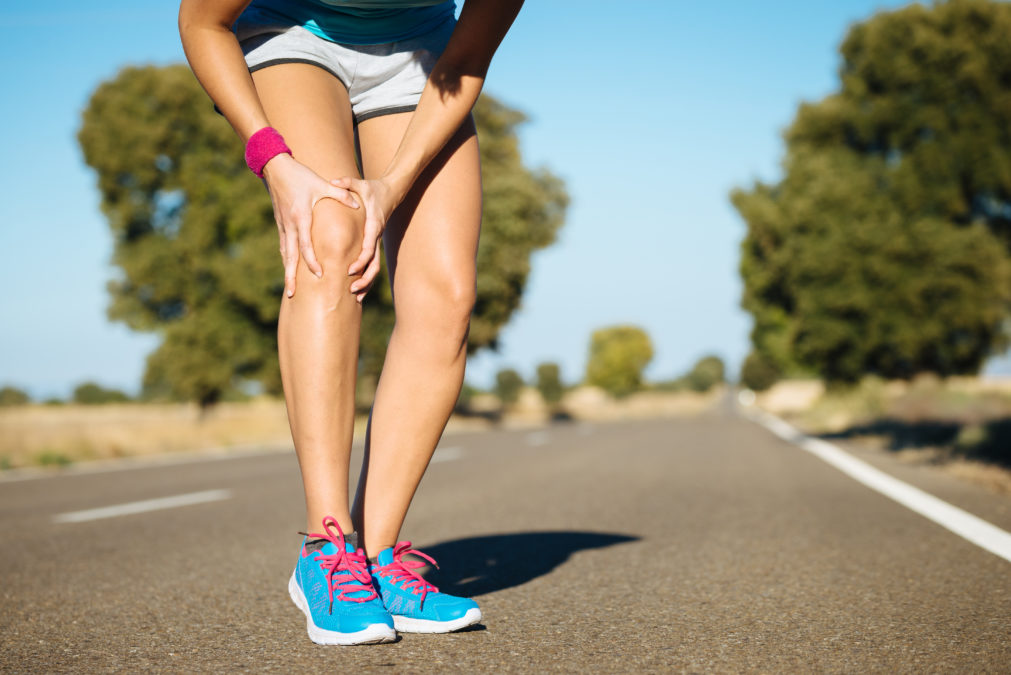
Jogging is becoming ever more popular. Yet the question of whether running really is as healthy as people assume comes up time and again. This is because enormous impact forces are created when running, resulting in many runners having problems with their joints. But does that mean running is bad for you, and does it put too much stress on the joints?
Why running can cause joint stress
Running can damage joints, tendons and the like. Yet there are many different factors which play a role, such as your own body weight, the distance you run and even the surface you run on. But it is a fact that, when running very long distances, huge forces are generated which act on a runner’s joints. To be exact, forces equating to two or three times your own body weight. This means that the heavier someone is, the greater the stress on the joints when running. To illustrate this using an example, we can look at the steps taken in a marathon. A runner will run roughly 40,000 steps over the course of a marathon. If the runner weighs 180 pounds, the stress exerted on the joints can be calculated as follows: 540 pounds x 40,000 steps. That’s a lot of impact force which the joints have to absorb. And it’s not just the joints, of course – the cartilage, tendons, ligaments and muscles are also affected. This example of a marathon is very extreme, however, and the stress the body is exposed to in a 10K run is significantly lower in comparison. That’s why, when it comes to running and the physical stress associated with it, the intensity of a training session is always a factor too. The running surface also plays a role. The harder the surface you run on, the higher the forces acting on the body. But that doesn’t have to mean that a hard surface – such as asphalt – is bad. Quite the opposite. If your running technique is technically correct, you can do your laps on asphalt completely worry-free. Running on cobbled surfaces can be a little more problematic, as that really is hard. On the other hand, the surface shouldn’t be too soft either. Running on sand, for example, places very different demands on joints and tendons – which is not necessarily a positive thing.
As you can see, there are a wide range of different factors at play here which determine whether running stresses the joints. We’ve put together a few tips on how to run in a way that is easy on your joints.
How to run correctly to protect your joints
How is always important – and the same is true of running. If you choose the right running shoes and pay attention to your running technique, you can stay fit and healthy by jogging without putting too much stress on your joints. When it comes to running technique, try to follow these golden rules:
- Always maintain body tension.
- You should keep an upright body posture when running, but leaning forward slightly.
- Allow your arms to bend and swing slightly as you run. Your arms play a very important role in running, which should not be underestimated.
- It is better to take small, short strides and increase your stride frequency.
- Listen to how loud your footfall is. A quiet running style can indicate a gentle way of running.
It isn’t just running technique that matters – your running shoes are important too. And this means multiple pairs. If you do several running sessions a week, it really makes sense to have several pairs of running shoes. Your feet will benefit from the variation and it gives the shoes you have already used chance to properly dry out and air. When you’re buying yourself new running shoes, go to a specialist shop for advice. Not only should you do this, but you should also think about what time of day you buy your new running shoes. Ideally, go late in the afternoon or early in the evening, as our feet expand by around 4% through the day. You also need to know where you will be using your shoes – on asphalt, in a forest or on cobblestones? This is just as important when choosing running shoes. And once you get your new shoes, don’t keep them forever. Once you’ve done about 600 to 1000 kilometers, it’s time for a new pair.
On top of all this, it’s also important to listen to your body. If you have knee pain, pay attention to it. Don’t just keep running through the joint pain! That will only make things worse and can lead to long-term damage.
Jogging regularly can keep your heart and lungs healthy and is anything but bad for you. And although running does have the potential – depending on the intensity and other factors – to place stress on the joints, tendons and the like, that’s no reason to stop running. What’s more, not only can running help combat being overweight – and weight loss considerably reduces the stress on your joints – but running regularly can also train the muscles in your joints, which in turn encourages a good running style. So if you are mindful of the factors outlined in this article, you can carry on running with a clear conscience – because running doesn’t have to lead to joint stress! 🙂